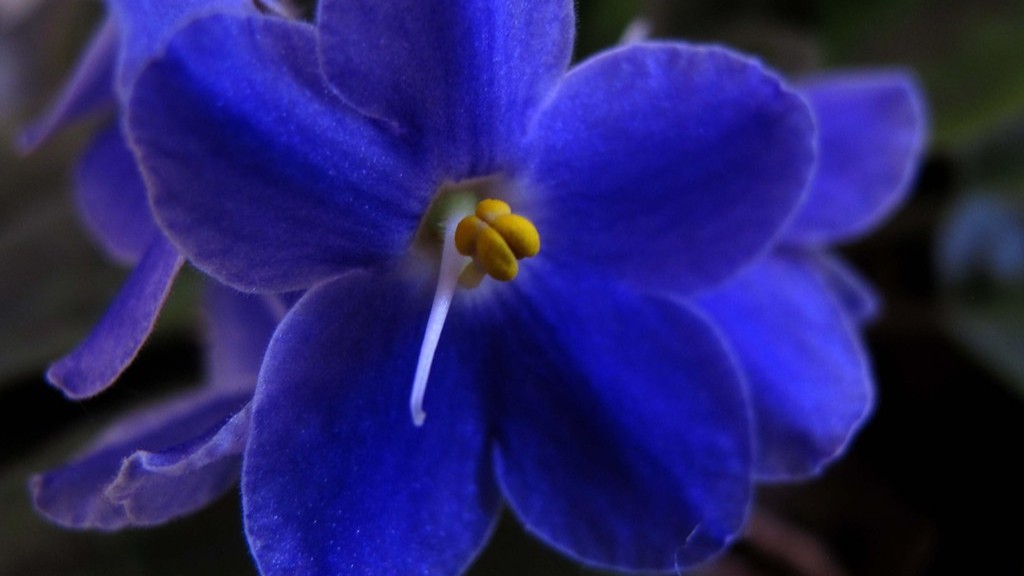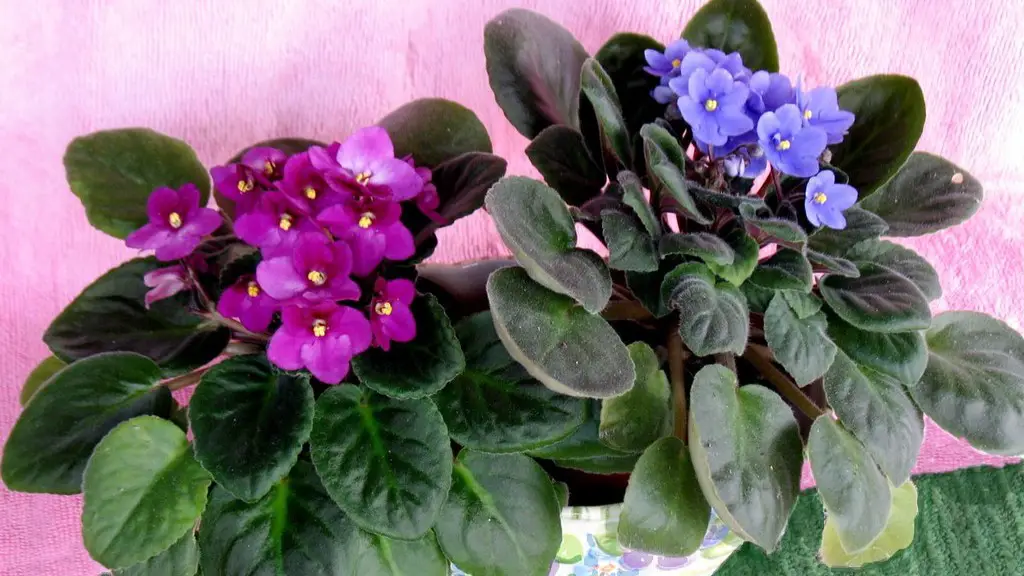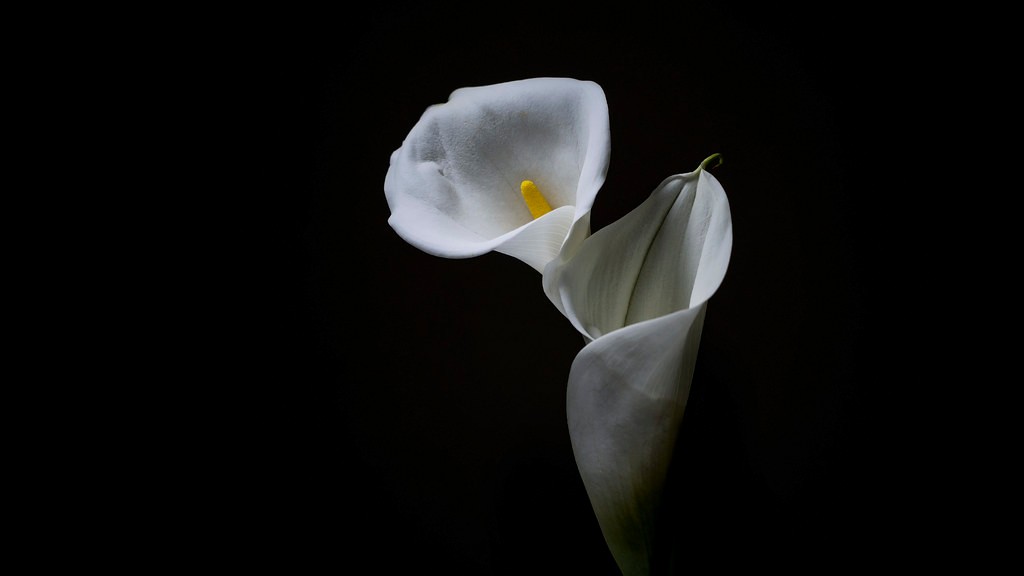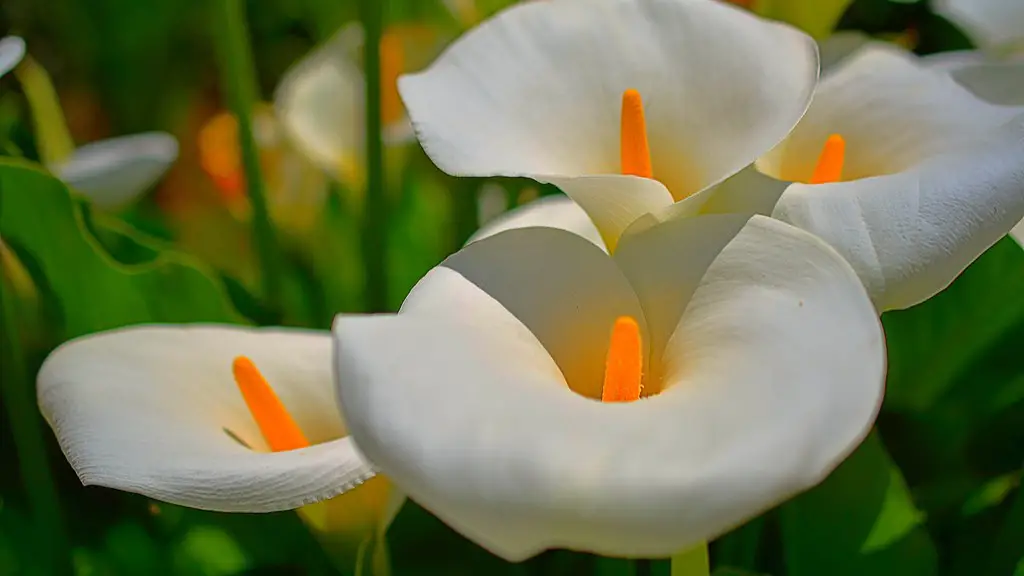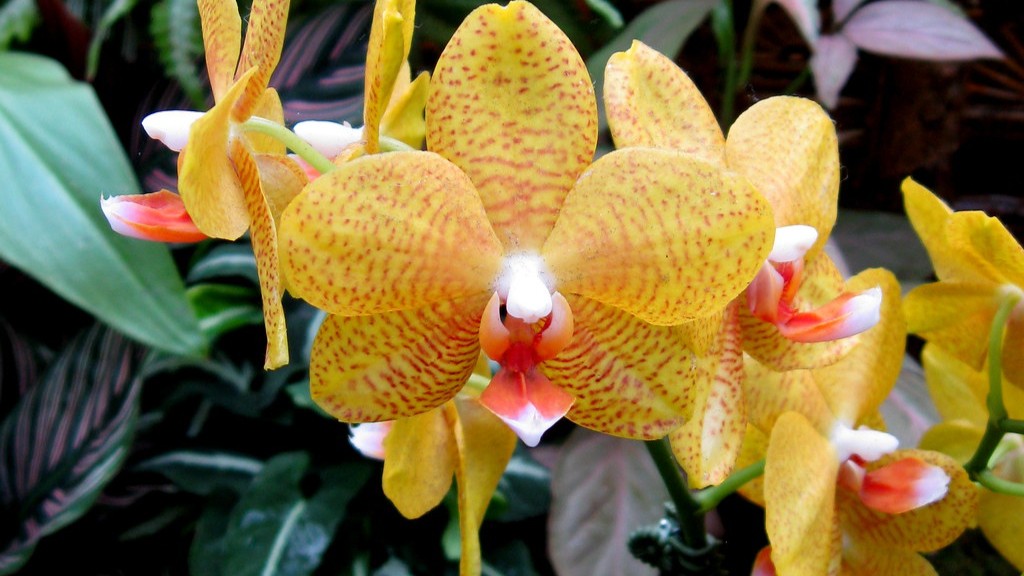African violets are one of the most popular houseplants. They are relatively easy to grow and make excellent houseplants. With a little care, they will bloom continuously and provide you with beautiful flowers. Here are some tips on how to grow African violets:
• Light: African violets need bright, indirect light. They will bloom best if they receive about 12 hours of light per day. If they don’t get enough light, they will produce fewer flowers.
• Water: African violets like to be kept moist, but not wet. Water them from the bottom by placing the pot in a saucer of water. Allow the water to absorb up through the drainage holes. Don’t let the plant stand in water, as this can cause root rot.
• Soil: African violets need a light, well-draining soil. You can purchase a special African violet potting mix, or make your own by mixing equal parts peat moss, perlite, and vermiculite.
• Fertilizer: African violets need to be fertilized regularly to bloom their best. Use a water-soluble fertilizer designed for flowering plants, and fertil
To grow African violets, you will need:
-African violet potting mix
-A pot or container with drainage holes
-A watering can or spray bottle
-Fertilizer designed for African violets
1. Fill your pot or container with African violet potting mix, and make sure there are drainage holes in the bottom.
2. Water your African violet with a watering can or spray bottle, being careful not to get water on the leaves.
3. When the potting mix is damp, add a small amount of fertilizer designed for African violets.
4. Place your African violet in a spot that gets bright, indirect sunlight, and water and fertilize regularly. With proper care, your African violet should bloom all year long!
How often do you water an African violet?
If you’re looking to save time on watering your African violets, setting up a wicking system is a great way to do it! With this method, you’ll only need to water your plants once a week, and they’ll always have a steady supply of moisture. Plus, since the roots will be constantly immersed in water, they’ll never have a chance to dry out completely between waterings.
African violets are beautiful, easy-to-grow flowers that were once found only in the coastal woods of east Africa. Today, they are among the most popular indoor plants, thanks to their easy care and stunning blooms. If you’re looking for a beautiful and low-maintenance plant for your home, African violets are a great option!
How do you take care of African violets indoors
African violets need indirect sunlight for best results. Choose a north- or east- facing window to keep plants away from cold glass and rotate the pot once a week so all leaves receive light. Extend daylight by placing African violets under a grow light during winter months.
There are a few things you can do to help your African Violet bloom again:
1. Let There Be Light – African Violets need bright, indirect light in order to bloom. If your plant is not getting enough light, it may stop blooming.
2. Turn Up the Humidity – African Violets also like a humid environment. If the air in your home is too dry, your plant may stop blooming.
3. Replenish Essential Nutrients – African Violets need nutrients to bloom. If your plant is not getting enough nutrients, it may stop blooming.
4. Keep it Pleasant – African Violets like a warm, humid environment. If the environment is too cold or too dry, your plant may stop blooming.
5. Choose the Right Soil – African Violets need a well-draining soil. If your plant is not getting enough drainage, it may stop blooming.
6. Protect From Pests & Disease – African Violets are susceptible to pests and disease. If your plant is not protected from pests and disease, it may stop blooming.
7. Constrict the Roots – African Violets need their
Should African violets be misted?
Water your African violet carefully to avoid leaf spotting and crown rot. Use room-temperature water and mist the foliage, being careful not to saturate the crown of the plant.
If you are concerned about the quality of your tap water, it is best to use distilled or filtered water for your African violets. Chlorine levels can fluctuate depending on the season, and in some areas tap water may have high levels of chlorine, chloramines, or dissolved solids. These things may adversely affect your African violets, so using distilled or filtered water is the best way to ensure that your plants are getting the best possible water.
Do African violets like bigger pots?
African violets need to be slightly pot-bound to thrive, so select a pot that is on the smaller side. A general rule of thumb is that standard African violet plants do best in a pot that is 3-4 inches in diameter.
African violets prefer slightly acidic conditions, between 58 to 65 pH. In conventional soil, your plant won’t be able to efficiently absorb nutrients. Generally, peat moss is used to lower the pH in African violet potting soil. By creating these optimal conditions, you’ll help your plant thrive and produce more beautiful blooms.
Do African violets multiply
African violets and rex begonias are two common houseplants that can be easily propagated from leaf cuttings. To do this, simply cut a leaf from the plant and bury it in a pot of soil. The leaf will quickly wilt, so it’s important to have the pot of soil ready before taking the cutting.
There are a few different ways to get rid of wild violets without damaging the grass. One is to use a broadleaf killer that contains 2,4-D or Dicamba. Another great wild violet herbicide is called Drive (quinclorac). Whichever method you choose, be sure to follow the directions on the label carefully.
Can I pour coffee on my plants?
Coffee grounds make an excellent fertilizer for plants. The coffee grounds release nitrogen into the soil, which helps produce healthy green growth and strong stems. You can use coffee grounds on both indoor and outdoor plants.
Watering your plant is important to keeping it healthy and encourage blooming. You should keep the soil moist to dry and allow the soil around the roots to dry out before watering. This will help promote blooming. Water from the bottom with room temperature water by placing the plant’s pot in water and allowing the plant to absorb the water for no more than 30 minutes.
What pots are best for African violets
African violets are best suited for small self-watering pots, as they provide the perfect amount of moisture for the plant. These pots also help to control the moisture level, which is important for African violets.
While some people consider wild violets to be a decorative plant, others find them to be a bothersome weed. Wild violets can be difficult to control because of their aggressive behavior.
When should I repot my African violet?
It is important to repot African violets with fresh potting soil every few months, or at least once a year. This ensures that the roots have enough space to grow, and that the plant gets the nutrients it needs. When repotting, be sure to use a pot that is only slightly larger than the current one, as violets can become rootbound quickly.
If you’re giving your African violet tepid or room temperature water, let it sit for 24-48 hours before giving it to your plant. If you can’t let it sit that long, then let it stand for at least an hour.
Warp Up
African Violets are not difficult to grow when you follow a few simple rules. They need a bright location out of direct sunlight, with a temperature between 65 and 75 degrees F. They also need a humid environment, so a daily misting or setting the pot on a pebble tray filled with water is essential.
African violets prefer a soil that is loose and well-draining, so a potting mix made specifically for them is a good choice. Be sure to use a pot with a drainage hole to avoid overwatering. Water African violets early in the day so the leaves have time to dry before nightfall, and always water at the base of the plant, avoiding getting water on the leaves.
Fertilize African violets regularly with a water-soluble fertilizer to keep them healthy and blooming. Lastly, Deadhead any spent blossoms to encourage more flowers.
The African violet is a perfect plant for anyone who wants to add a splash of color to their home without having to put in a lot of effort. These lovely flowers are relatively easy to care for and can bloom year-round with the proper care. With a little patience and the following tips, you can enjoy these beautiful blooms in your own home.
